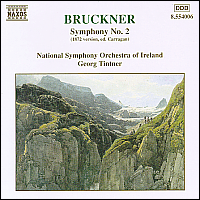


The Second Symphony was composed between October 1871 and September 1872, when the composer was nearly 50. It would not be considered among Bruckner’s greatest works, but it is a fine piece of his early symphonies. Here you can hear many elements that appear in Bruckner’s later symphonies, such as the grand gesture from the brass, but this is still not juvenile Bruckner. In 1873, Bruckner revised the symphony to prepare for the first performance on October 26, 1873, by the Vienna Philharmonic Orchestra. There were many changes in this revision: The order of the inner movements was reversed. In the Adagio, the horn solo at the end was changed to a clarinet solo and a violin solo was added. The repeats were canceled in the Scherzo and Trio. A passage in the Finale was completely rewritten, and a fourth trombone was added in the final few bars to reinforce the bass line. In 1877, Bruckner again made some cuts in the first movement and in the Adagio. Because of so many changes, the Second Symphony has many versions. The 1877 version is mostly performed these days.

 Riccardo Chailly
Riccardo Chailly


Chailly chooses the 1887 version, edited by Haas. The gorgeous Adagio movement, surely the most profound of Bruckner's early slow movements, is given a noble, unexaggerated reading, with some truly vivid woodwind playing. There is no substitute for imaginative and each line is shaped with spirit and affection. Decca’s excellent recording makes the performance a fine work of art.

 Georg Tintner
Georg Tintner


Tintner uses the 1872 original version, edited by William Carragan. He strongly believes that Bruckner’s first version of the Second is the best. He restores the two inner movements with the original order. The Scherzo comes before the Adagio. Although the Irish ochestra’s don't possess the sheer textural beauty of the Chailly's Concertgebouw, the playing is consistently well-balanced, with some flashes of brilliance.

Other Recommendations:
Sir Georg Solti

